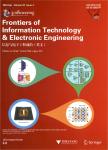Multi-scale UDCT dictionary learning based highly undersampled MR image reconstruction using patch-based constraint splitting augmented Lagrangian shrinkage algorithm
Multi-scale UDCT dictionary learning based highly undersampled MR image reconstruction using patch-based constraint splitting augmented Lagrangian shrinkage algorithm作者机构:School of Information Science & EngineeringLanzhou University
出 版 物:《Frontiers of Information Technology & Electronic Engineering》 (信息与电子工程前沿(英文版))
年 卷 期:2015年第16卷第12期
页 面:1069-1087页
核心收录:
学科分类:0810[工学-信息与通信工程] 0808[工学-电气工程] 0809[工学-电子科学与技术(可授工学、理学学位)] 08[工学] 0839[工学-网络空间安全] 080203[工学-机械设计及理论] 0802[工学-机械工程] 0835[工学-软件工程] 0812[工学-计算机科学与技术(可授工学、理学学位)]
基 金:Project supported by the National Natural Science Foundation of China(Nos.61175012 and 61201422) the Natural Science Foundation of Gansu Province of China(No.1208RJ-ZA265) the Specialized Research Fund for the Doctoral Program of Higher Education of China(No.2011021111-0026) the Fundamental Research Funds for the Central Universities of China(Nos.lzujbky-2015-108 and lzujbky-2015-197)
主 题:Compressed sensing(CS) Magnetic resonance imaging(MRI) Uniform discrete curvelet transform(UDCT) Multi-scale dictionary learning(MSDL) Patch-based constraint splitting augmented Lagrangian shrinkage algorithm(PB C-SALSA)
摘 要:Recently, dictionary learning(DL) based methods have been introduced to compressed sensing magnetic resonance imaging(CS-MRI), which outperforms pre-defined analytic sparse priors. However, single-scale trained dictionary directly from image patches is incapable of representing image features from multi-scale, multi-directional perspective, which influences the reconstruction performance. In this paper, incorporating the superior multi-scale properties of uniform discrete curvelet transform(UDCT) with the data matching adaptability of trained dictionaries, we propose a flexible sparsity framework to allow sparser representation and prominent hierarchical essential features capture for magnetic resonance(MR) images. Multi-scale decomposition is implemented by using UDCT due to its prominent properties of lower redundancy ratio, hierarchical data structure, and ease of implementation. Each sub-dictionary of different sub-bands is trained independently to form the multi-scale dictionaries. Corresponding to this brand-new sparsity model, we modify the constraint splitting augmented Lagrangian shrinkage algorithm(C-SALSA) as patch-based C-SALSA(PB C-SALSA) to solve the constraint optimization problem of regularized image reconstruction. Experimental results demonstrate that the trained sub-dictionaries at different scales, enforcing sparsity at multiple scales, can then be efficiently used for MRI reconstruction to obtain satisfactory results with further reduced undersampling rate. Multi-scale UDCT dictionaries potentially outperform both single-scale trained dictionaries and multi-scale analytic transforms. Our proposed sparsity model achieves sparser representation for reconstructed data, which results in fast convergence of reconstruction exploiting PB C-SALSA. Simulation results demonstrate that the proposed method outperforms conventional CS-MRI methods in maintaining intrinsic properties, eliminating aliasing, reducing unexpected artifacts, and removing noise. It can achieve comparable performance of reconstruction with the state-of-the-art methods even under substantially high undersampling factors.



